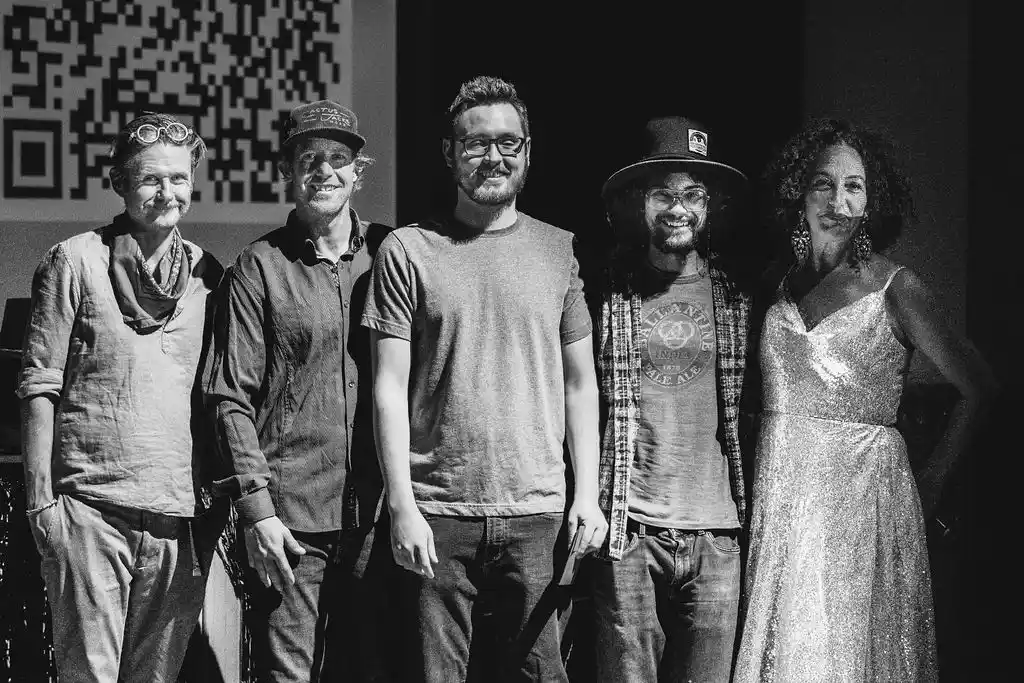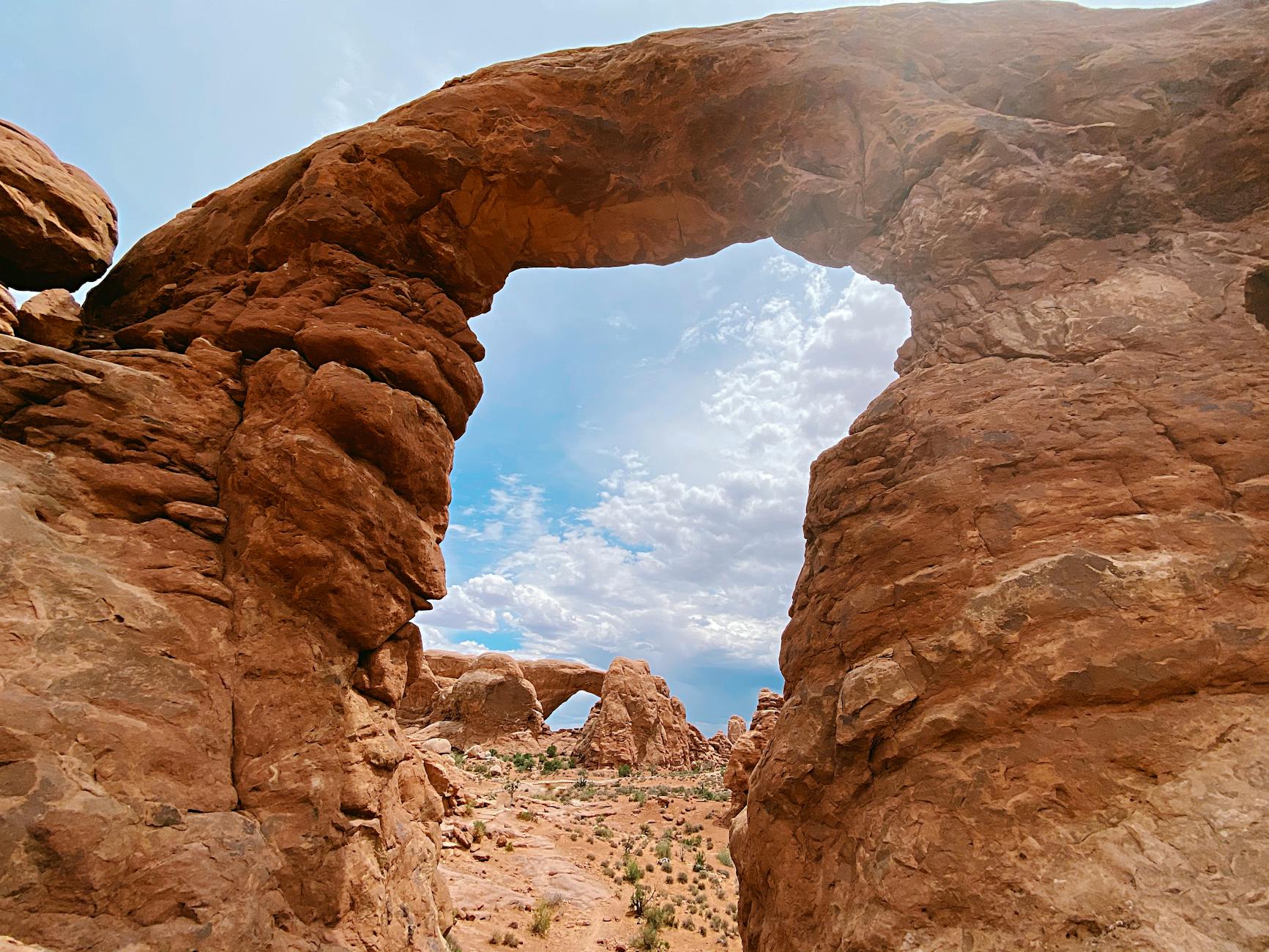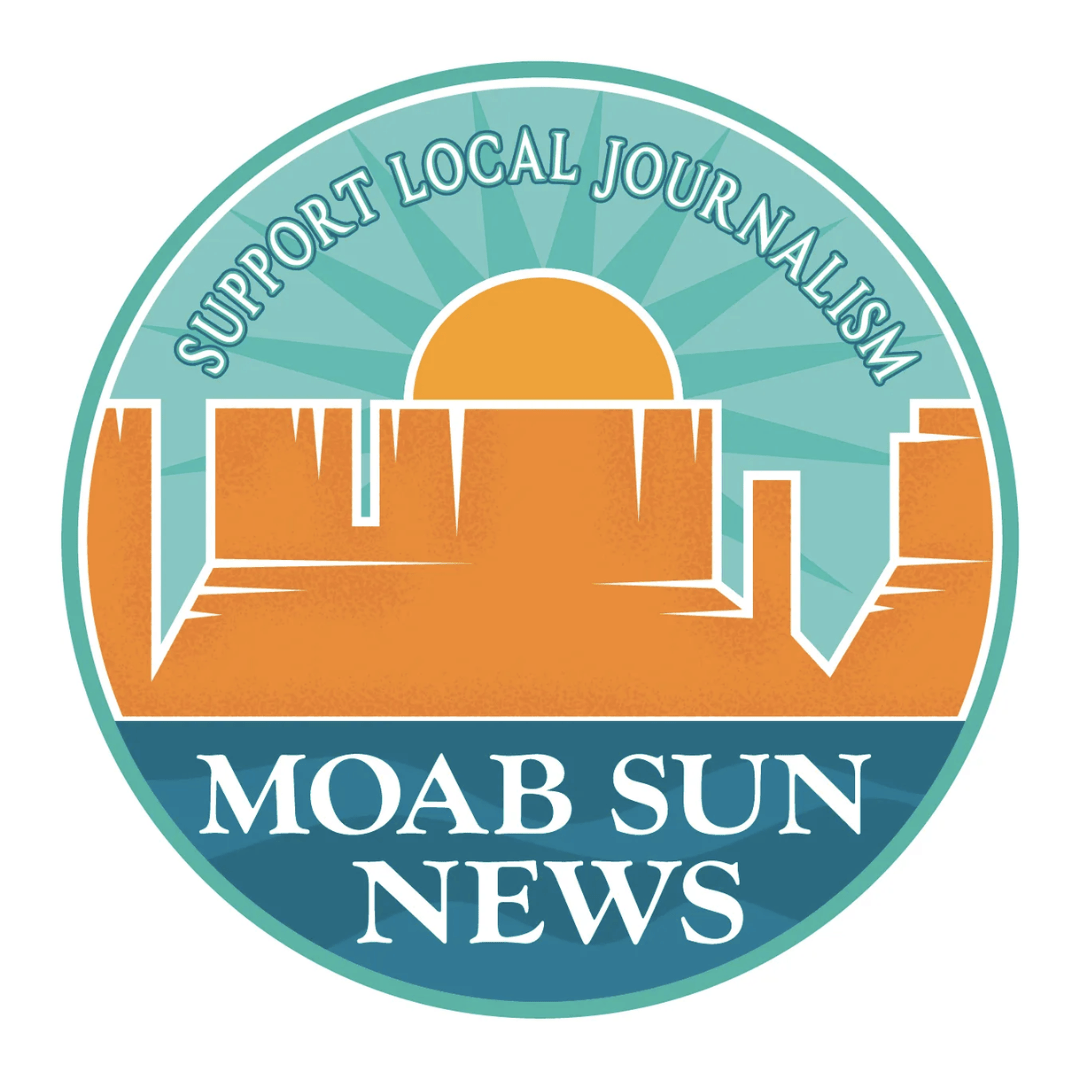The music on KZMU Radio, Moab’s community radio station, fades out. In the studio, Emma Millis confidently leans into the microphone, live and on the air.
“This is Grand County’s very own student-led broadcast, the Brainstorm, where we as students will talk about the big things happening in the world – and how they affect our little town of Moab,” she says, introducing the first-ever edition of the new show, a collaboration between KZMU Radio, Grand County High School and the enterprising young students themselves.
Joined by students Ty Martinez, Nathaniel Mason, and Grace Mefret, Millis led the inaugural show on Feb. 24 as the students tackled the issue of universal basic income programs, interviewing local City Councilman Mike Duncan and digging into the history of the issue. The program will run on the fourth Monday of every month beginning at 4 p.m., with each edition examining a political or social issue through the teenagers’ eyes and in their own words.
“It was amazing, they were so prepared,” says KZMU Station Director Serah Mead enthusiastically. “This is really a case where we were able to give the students a little direction but mostly just say ‘Go!’”
Mead says that featuring the voice of young people has long been a priority of KZMU Radio, from a long-running show called “Voices of Youth” that was produced more than a decade ago to the current youth-led music programs “Shine Time and “Tween Time,” which have young hosts.
“It’s important to get young voices to remind folks who the next generation is,” says Mead, “and it’s important also for community and public radio to stay open and relevant for years to come, and that starts with listening.”
In 2019, Mead and KZMU News & Public Affairs Director Molly Marcello met to discuss diversifying the station’s public affairs programming and quickly saw that a youth-led news program could be a great fit, especially after a meeting with Grand County High School’s Carrie Strecker.
Students involved in the team had previously been on KZMU’s airwaves as guests of other current affairs shows, says Marcello.
“They were so unbelievably well-spoken and thoughtful,” she says, that she knew that the teens could carry a full-length show on their own.
That’s where Strecker came in.
“Carrie has such deep insight into student life at the high school,” says Marcello.
“I happened to be meeting with Molly and Serah to talk about our internship program, and we just started to talk about how cool it would be to have the high school students lead a show,” says Strecker.
She immediately saw the idea’s potential and started bringing the concept to her students. As the coach of the school’s Speech and Debate team, she quickly found a group of students impassioned about issues and unafraid of speaking out.
The students designed the program to tackle issues from many angles, with segments focusing on the history and background, talking to local leaders and elected officials, holding more formal debates on contentious issues and making sure to involve the community through broadcasting insights from locals on Main Street with a feature known in the radio industry as a ‘Vox Pop.’
“This show isn’t easy. The high school students do their own public affairs show, eventually without any staff interference at all. They’ve conceptualized it themselves, they will be the hosts, design the program, invite guests and run the soundboard,” Marcello says.
In fact, it’s that full-contact experience that Strecker is most enthusiastic about. Strecker sees the creation of the radio show tied tightly to her role as the career and technical education advisor at the school. Career and technical education is the practice of teaching specific skills appropriate for jobs in STEM fields, manufacturing, health services and other careers where hands-on skills count for just as much as theoretical learning.
As the radio show progresses, Strecker is looking to collaborate with other teachers and school officials to work the program and the opportunity it creates into the curriculum.
“It’s obvious and easy to connect the program to our journalism or audio/visual production classes,” she says, adding that even teachers can pick up skills at the station.
“The technical side of the show is learning our on-air system: monitoring mic levels, which can be challenging to even out different voices; working out transitions and music breaks; and on this last show, they had a four-minute feature of community ‘vox-pops,’ so there’s editing involved,” says Marcello.
“The show is presented live. The live element adds a lot, you have to think on your feet but these students were up to it,” she says. “The live element is definitely a part of the KZMU feel: unexpected, magical moments on air.”
Mead agrees, pointing out how thrilled she is that the students adopted the vox-pop or ‘man on the street’ style interview.
“That style is one of the pillars of community radio, and I don’t hear it as much anymore,” she says. While helping community members create, design and support their own public affairs program is a significant commitment of time for the small radio staff, Mead says it’s a priority.
“We’re always looking for people who want to share on the air,” she says. “A lot of people may not be interested in the music side of things, but they’re interested in debate or anthropology or science, that those interests reflect the community we’re in.”
The high school students on “The Brainstorm” get deeply engaged in talking about world events, ethical conundrums and philosophical problems. But bringing these ideas outside school walls is a deeply important way of sharing their thoughts and voices, not only with each other but with society as a whole.
“It’s wonderful for them to be able to share these ideas and discussions with the community,” said Strecker.
After almost an hour of live, on-air discussion, Emma Millis leans into the microphone once more to close off the first broadcast with thanks and a promise that next month, these young voices will return with more “great content and thoughts on important issues.”
The next edition of “The Brainstorm” will be broadcast live on March 24 at 5 p.m. on KZMU Radio at 90.1 and 106.7 FM. Past episodes may be listened to at www.kzmu.org/category/the-brainstorm/
Look to the Moab Sun News for future stories profiling the student journalists, moderators and technical workers involved in “The Brainstorm.”
“The Brainstorm” is broadcast live every fourth Monday of the month at 5 p.m. on KZMU Radio at 90.1 and 106.7 FM. Past episodes may be listened to at www.kzmu.org/category/the-brainstorm/





